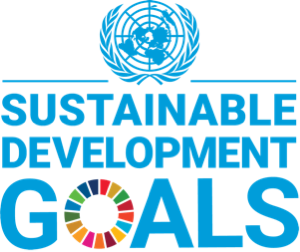Evaluating Suppliers for Healthcare Centre using Ordinal Priority Approach
DOI:
https://doi.org/10.52812/msbd.12Keywords:
multiple criteria decision making, sustainable development , Ordinal Priority Approach , healthcare, supplier selectionAbstract
Supplier selection is one of the most critical problems in the industry. In the healthcare sector, where the tolerance level for mistakes and errors is low, the need to improve the supplier evaluation system is ever increasing. Earlier, the cardinal data-based mathematical models played an important role in supplier selection however since last few decades, the emphasis on the decision-making methods that can handle ordinal relations is gaining exceeding attention. The development of the Ordinal Priority Approach (OPA) is an essential milestone in this regard that is being used in the current study to evaluate the suppliers of a Chinese healthcare facility. The study confirms that the OPA is convenient and powerful approach that can single-handedly estimate the weights of suppliers, criteria and experts. The results demonstrated the feasibility and validity of the approach for healthcare supplier selection problems.
References
Akcan, S., & Güldeş, M. (2019). Integrated multi-criteria decision-making methods to solve supplier selection problem: a case study in a hospital. Journal of Healthcare Engineering, 2019, Article ID 5614892 https://doi.org/10.1155/2019/5614892
Ataei, Y., Mahmoudi, A., Feylizadeh, M. R., & Li, D. F. (2020). Ordinal priority approach (OPA) in multiple attribute decision-making. Applied Soft Computing, 86, 105893. https://doi.org/10.1016/j.asoc.2019.105893
Bahadori, M., Hosseini, S. M., Teymourzadeh, E., Ravangard, R., Raadabadi, M., & Alimohammadzadeh, K. (2020). A supplier selection model for hospitals using a combination of artificial neural network and fuzzy VIKOR. International Journal of Healthcare Management, 13(4), 286-294. https://doi.org/10.1080/20479700.2017.1404730
Fan, Y., Liu, S., Liu, J., Javed, S. A., & Fang, Z. (2020). Habit or Utility: A Key Choice Point in Promoting the Adoption of Telehealth in China. Complexity, 2020, Article ID 5063756 https://doi.org/10.1155/2020/5063756
Fashoto, S. G., Akinnuwesi, B., Owolabi, O., & Adelekan, D. (2016). Decision support model for supplier selection in healthcare service delivery using analytical hierarchy process and artificial neural network. African Journal of Business Management, 10(9), 209–232. https://doi.org/10.5897/AJBM2016.803
Ghadimi, P., & Heavey, C. (2014). Sustainable supplier selection in medical device industry: toward sustainable manufacturing. Procedia Cirp, 15, 165-170. https://doi.org/10.1016/j.procir.2014.06.096
Ishtiaq, P., Khan, S. A., & Haq, M. U. (2018). A multi-criteria decision-making approach to rank supplier selection criteria for hospital waste management: A case from Pakistan. Waste Management & Research, 36(4), 386-394. https://doi.org/10.1177/0734242X18755894
Javed, S. A., Liu, S., Mahmoudi, A., & Nawaz, M. (2019). Patients’ Satisfaction and Public and Private Sectors’ Healthcare Service Quality in Pakistan: Application of Grey Decision Analysis approaches. International Journal of Health Planning and Management, 34(1), e168-e182. https://doi.org/10.1002/hpm.2629
Khambhati, R., Patel, H., & Kumar, S. (2021). A performance evaluation and comparison model for Urban Public Healthcare Service Quality (UrbPubHCServQual) by Fuzzy TOPSIS Method. Journal of Nonprofit & Public Sector Marketing, 1-20. https://doi.org/10.1080/10495142.2020.1865232
Lambert, D. M., Adams, R. J., & Emmelhainz, M. A. (1997). Supplier Selection Criteria in the Healthcare Industry: A Comparison of Importance and Performace. International Journal of Purchasing and Materials Management, 33(4), 16-22. https://doi.org/10.1111/j.1745-493X.1997.tb00021.x
Mahmoudi, A., Deng, X., Javed, S. A., & Yuan, J. (2020). Large-Scale Multiple Criteria Decision-Making with Missing Values: Project Selection through TOPSIS-OPA. Journal of Ambient Intelligence and Humanized Computing. https://doi.org/10.1007/s12652-020-02649-w
Mahmoudi, A., Deng, X., Javed, S. A., & Zhang, N. (2021b). Sustainable Supplier Selection in Megaprojects through Grey Ordinal Priority Approach. Business Strategy and The Environment, 30, 318-339. https://doi.org/10.1002/bse.2623
Mahmoudi, A., Javed, S. A., & Mardani, A. (2021a). Gresilient Supplier Selection through Fuzzy Ordinal Priority Approach: Decision-making in Post-COVID era. Operations Management Research. https://doi.org/10.1007/s12063-021-00178-z
Ortíz, M. A., Felizzola, H. A., & Isaza, S. N. (2015). A contrast between DEMATEL-ANP and ANP methods for six sigma project selection: a case study in healthcare industry. BMC Medical Informatics and Decision Making, 15(3), 1-12. https://doi.org/10.1186/1472-6947-15-S3-S3
Reuter, C., Goebel, P., & Foerstl, K. (2012). The impact of stakeholder orientation on sustainability and cost prevalence in supplier selection decisions. Journal of Purchasing and Supply Management, 18(4), 270-281. https://doi.org/10.1016/j.pursup.2012.06.004
Saetta, S., Caldarelli, V., Saetta, S., & Caldarelli, V. (2020). How to increase the sustainability of the agri-food supply chain through innovations in 4.0 perspective: a first case study analysis. Procedia Manufacturing, 42, 333-336. https://doi.org/10.1016/j.promfg.2020.02.083
Şahin, T., Ocak, S., & Top, M. (2019). Analytic hierarchy process for hospital site selection. Health Policy and Technology, 8(1), 42-50. https://doi.org/10.1016/j.hlpt.2019.02.005
Shajedul, I. (2021). Evaluation of Low-Carbon Sustainable Technologies in Agriculture Sector through Grey Ordinal Priority Approach. International Journal of Grey Systems, 1(1), 5-26. https://doi.org/10.52812/ijgs.3
Stević, Ž., Pamučar, D., Puška, A., & Chatterjee, P. (2020). Sustainable supplier selection in healthcare industries using a new MCDM method: Measurement of alternatives and ranking according to COmpromise solution (MARCOS). Computers & Industrial Engineering, 140, 106231. https://doi.org/10.1016/j.cie.2019.106231
Sumrit, D. (2020). Supplier selection for vendor-managed inventory in healthcare using fuzzy multi-criteria decision-making approach. Decision Science Letters, 9(2), 233-256. https://doi.org/10.5267/j.dsl.2019.10.002
Suraraksa, J., & Shin, K. S. (2019). Comparative Analysis of Factors for Supplier Selection and Monitoring : The Case of the Automotive Industry in Thailand. Sustainability, 11(4), 981. https://doi.org/10.3390/su11040981
Venkatesh, V. G., Dubey, R., Joy, P., Thomas, M., Vijeesh, V., & Moosa, A. (2015). Supplier selection in blood bags manufacturing industry using TOPSIS model. International Journal of Operational Research, 24(4), 461-488. https://doi.org/10.1504/IJOR.2015.072725
Yazdani, M., Torkayesh, A. E., & Chatterjee, P. (2020). An integrated decision-making model for supplier evaluation in public healthcare system: the case study of a Spanish hospital. Journal of Enterprise Information Management, 33(5), 965-989. https://doi.org/10.1108/JEIM-09-2019-0294
.

Downloads
Published
How to Cite
Issue
Section
License
Copyright (c) 2021 Management Science and Business Decisions

This work is licensed under a Creative Commons Attribution-NonCommercial 4.0 International License.
Creative Commons Non Commercial CC BY-NC: The work is distributed under the terms of the Creative Commons Attribution-NonCommercial 4.0 License which permits non-commercial use, reproduction and distribution of the work without further permission provided the original work is properly attributed.











